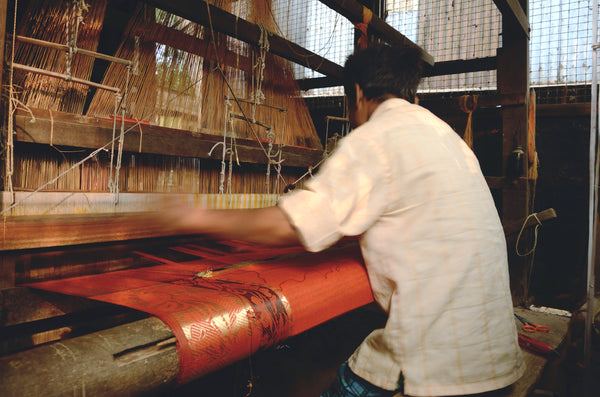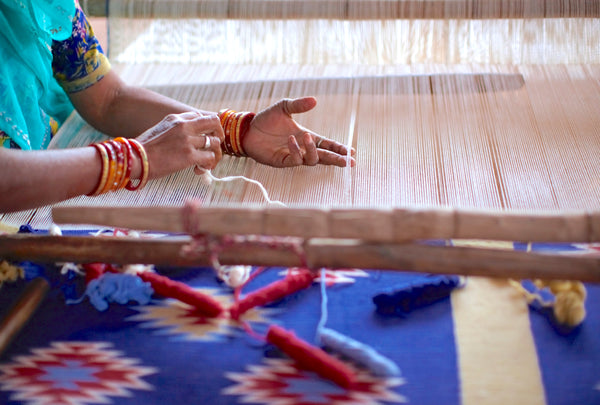With a textile history dating back millennia, it's inspiring to see the industry in India still going strong. A glorious tradition of artisans producing textiles by hand continues right up to the present day, with each region specialising in its own fabric and techniques.

Until at least the 18th century, India was using far more advanced techniques than the European textile industry, employing the likes of mordant dyeing from the second millennium BC.
Babur, the first Mughal emperor of India, championed the nation's ubiquitous floral motif during his reign from 1526-30. A great nature enthusiast, he commissioned many resplendent gardens and inspired later generations to incorporate sacred flowers into art, eventually spreading into commercial use at the height of the textile trade in the 18th and 19th centuries.
Indian textiles had been traded with China and Indonesia since ancient times and the creation of the 4,000 mile Silk Route was a significant contributor to regional development. At the end of the 15th century, Vasco da Gama arrived in India, creating a new sea route to India. Over the next few centuries, India became one of the greatest exporters of textiles in global history, sending textiles to all ends of the globe, from the Americas to the Far East.
The scale and impact of this period is illustrated by the fact that the English language still contains Indian words for many materials, from khaki, pyjama and gingham to calico and dungarees. 'Chintz', derived from a Sanskrit word meaning 'coloured' or 'spotted' now describes a type of floral decoration, but originally referred to glazed calico textiles made in India for the English market.

In the villages around Hyderabad, exquisite silk saris are woven in the rare and costly, double ikat style. This highly precise and labour intensive method involves resist dyeing the warp and weft fibres prior to weaving, eventually producing the unique 200-year-old design of the Puttapaka Sari.
Khadi fabric is a fabric that is not only woven by hand but also hand-spun. The raw materials are spun into threads on spinning wheels called Charka and the threads are then woven into a fabric. Khadi was symbolic of a movement started by Mahatma Ghandi as a means of making India self-reliant and free of the shackles of a British monopoly. Woven from cotton, silk or wool and traditionally considered a rough 'poor man's fabric', khadi has undergone a recent revival and can now be seen regularly on Indian catwalks.
In Assam, the eastern Himalayan region of India known for the eponymous tea, the mountainous climate is perfect for the special type of silkworm that produces Muga silk. A visit to the manicured tea plantations that cover the hills is a must. A wild silk, Muga is trickier to dye than its cultivated contemporaries, but has a far superior natural colour and a lustrous golden sheen. Though delicate and glossy in texture, it is deceptively strong.
Varanasi is world-famous for its extremely fine silk. The majority of silk weavers work at home on foot-powered looms, using methods that have been passed down through families for generations. Varanasi saris are known for their elaborate Zari embroidery using pure gold thread.

Kalamkari is a fabric that has been pain-stakingly painted by hand or block printed, using only natural dyes. Though the term has been misappropriated to refer to any fabric patterned with vegetable dyes, the original process is far more complicated. The Kalamkari process starts with bleaching the fabric, before immersing in a mixture of fruits and milk to avoid colour bleeding. Then the pattern is applied with a pen or brush, followed by the dyeing process. After all the colouring has been completed and the fabric has dried, the washing stage begins. Each fabric can be washed up to twenty times.
Whether it's a Banarsi silk sari or Banghani tie-dye from Rajasthan, the level of expertise and quality are the fruits of a long and rich textile history.






0 comments